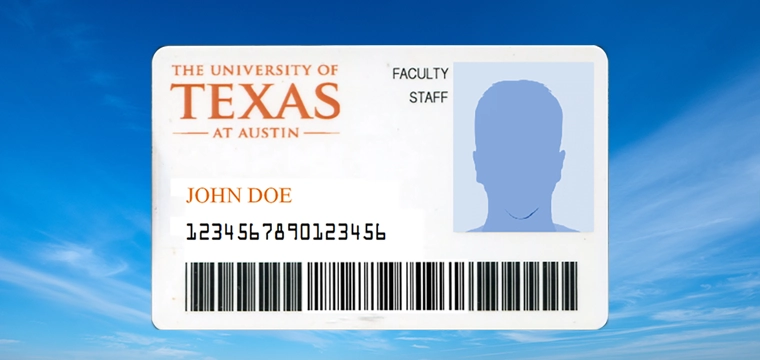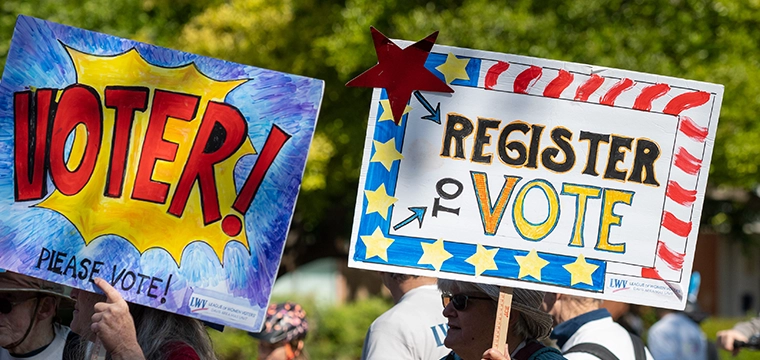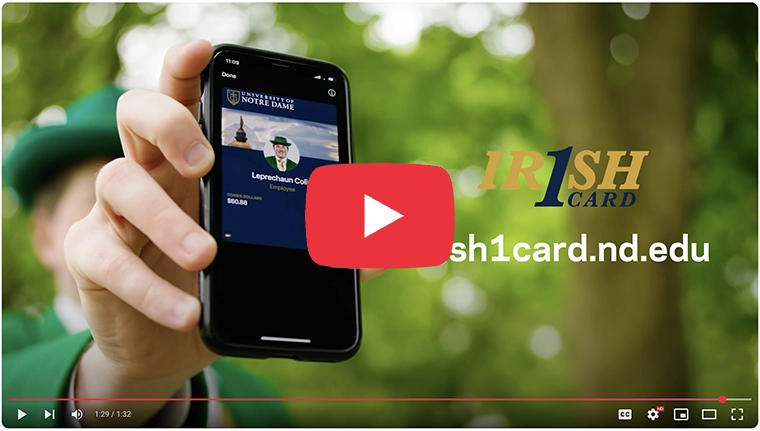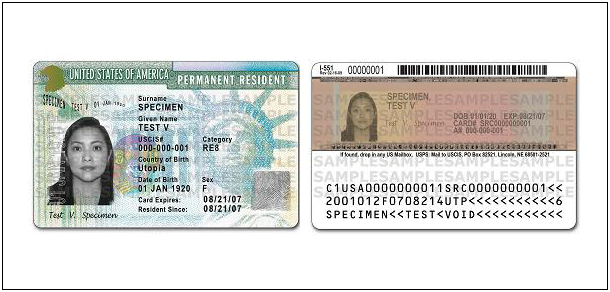
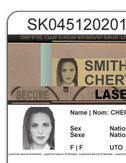 Optical memory cards, with their large data storage, strong security, and solid durability, are starting to gain the recognition one manufacturer of the cards feels the technology deserves. LaserCard Corporation (LCC), headquartered in Mountain View, Calif., says its optical memory card is being widely used in biometric and secure ID applications in North America and around the world – to the tune of more than 25 million cards.
Optical memory cards, with their large data storage, strong security, and solid durability, are starting to gain the recognition one manufacturer of the cards feels the technology deserves. LaserCard Corporation (LCC), headquartered in Mountain View, Calif., says its optical memory card is being widely used in biometric and secure ID applications in North America and around the world – to the tune of more than 25 million cards.
"National governments are increasingly selecting optical memory to secure national ID and immigration programs thanks to the virtually impenetrable security of cards and associated encoders and readers," said Pamela Henry, LaserCard's marketing manager. "It has uniquely matching characteristics that are exclusive to each card issuer. This core feature of LCC's counterfeit-resistant architecture safeguards against fraudulent card issuance and the alteration of legitimate cards."
An ISO standard optical card can store up to 2.8 Megabytes of digital data. That makes optical cards good for secure identification cards, because many card applications require stored images, such as facial images, fingerprint images, iris patterns, etc, said Ms. Henry.
"Second, and this is key, advanced card programs often have extended validity periods. In these circumstances, program planners have the luxury of knowing that optical memory's extensive capacity can absorb any likely future changes or additions to the program. And the card can store literally thousands of transactions records if required."
Security is a second benefit of optical card technology, she added. "Optical memory is generally acknowledged by forensic document specialists as the most counterfeit resistant machine-readable technology available today for secure ID card applications."
It works like this, she said. First, digital data is recorded in an irreversible process so that ID information on a legitimate card cannot be fraudulently altered for criminal purposes. Second, each implementation for secure ID is customized to the issuers' own specifications. Key characteristics of the card's memory and the issuing and inspection hardware are matched. "Our users have concluded that the hurdle for would-be card counterfeiters is so high they will seek some other vulnerability in the issuance process," said Ms. Henry.
Another security benefit of optical memory, she said, "is its ability to create visible, high-resolution micro images and security patterns in the optical media itself at resolutions up to 12,000 dots per inch. These features, which cannot be accurately simulated, are used by inspectors and forensic specialists for visual, overt, and aided, card authentication."
She said it is also possible to create a "laser-etched," visible image in the media, irreversibly marking the digital memory with the visible identity of the cardholder. "That's a unique security feature among all machine readable card technologies," she said.
These images are recorded during card personalization using a secure OMC encoder unit: the diffraction pattern created results in a highly visible image on the optical media. "This image cannot be altered, since the media is not erasable, and the permanent laser etching can be visually compared to more readily changeable colored photographic images of the cardholder that may also be printed on the card's surface," she said.
LaserCard OMC also offers a "hologram under overlay where a custom hologram is laminated into the structure of the card and is visible through a transparent outer layer of the card," said Ms. Henry. "The hologram will never be subject to wear and attempts at cannibalization of the feature are rendered useless."
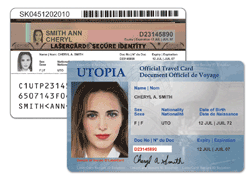 Optical Card Applications
Optical Card ApplicationsThe predominant application is secure identity in government programs, covering both immigration and border entry along with citizenship, she said.
"The U.S. Government was the first wide scale adopter of optical memory cards and remains the largest user of optical memory in the world," she said. In 1997, the U.S. Immigration and Naturalization Service, now part of the Department of Homeland Security, began issuing a new optical memory-based U.S. Permanent Resident Card, commonly known as the "Green Card." Then in 1998, the Department of State started issuing a machine-readable visa in optical card form, the Mexican Border Crossing Card (Laser Visa).
"With close to 20 million optical cards in circulation in Canada, the U.S. and Mexico, these cards play a key role in U.S. Homeland Security," said Ms. Henry. "Sixty percent of all foreigners arriving at U.S. borders carry an optical memory card for ID purposes."
It is clear that North America has generated the greatest demand for optical cards to date, but the Italian government has announced plans to issue a new citizen ID card, featuring both optical memory and an IC chip, to some 40 million adults in the coming years. Another potential market for LaserCard's product is the Middle East and Asia.
"As a consequence," said Ms. Henry, "it is expected that in five to ten years, there will be a globally dispersed optical memory market with a mix of optical memory only and hybrid applications, including contact and contactless chip technologies."
Durability is another important feature, primarily in industrial applications, she said. The U.S. Defense Logistics Agency's (DLA) Automated Manifest System (AMS) uses optical memory cards to resolve the problem of in-transit identification for critical supplies. The AMS cards provide in-transit visibility, expedite receipt processing, and serve as a portable permanent record of transactions. Since 1993 more than 750,000 optical memory cards and approximately 2,000 LaserCard OMC drives have been installed for use in shipping goods all over the world, often in the most hazardous environments, said Ms. Henry. The card is attached to the outside of the shipping container where it can be subject to the elements for months prior to being read.
With a near-zero failure rate, this is, said DLA Program Manager Eugene Bransfield, "the most durable and reliable media I've seen in over thirty years of DoD experience." The AMS program has won several government awards, including the Vice-Presidential Golden Hammer for cutting logistics costs more than 67%.
LCC is also seeing growth in the use of the technology in vehicle registration where the optical memory stores the vehicle's ownership history, owner/operator biometrics, accident and repair data, citations, prosecutions and registration renewal certificates, said Ms. Henry. Secure Optical/Smart vehicle registration programs are currently underway in two states in India.
Other emerging applications include the combination of optical memory technology with contactless chip technologies. For example, the new optical/proximity card, jointly developed with HID Corporation, offers secure physical access control, said Ms. Henry. The optical memory is used to biometrically verify the ID of a cardholder before the onboard proximity technology is activated to allow the cardholder suitably controlled access within the facility.
"We are pleased to be teaming with HID to develop what we believe to be one of the most secure commercial and industrial ID verification and access control systems available," commented LaserCard's CEO Richard Haddock. "Given today's security environment, we believe the global market opportunities are significant. Existing Prox and iCLASS users and companies with mobile employees should be especially interested in this product."
LaserCard Corporation manufactures and markets LaserCard(R) optical memory cards, chip-ready Smart/Optical(TM) cards and other advanced-technology secure identification cards. The company, headquartered in Mountain View, Calif., USA, has sold more than 25 million secure ID cards to meet the demanding requirements for border security, digital governance, and national identification in countries around the world, including the United States, Canada, Italy and India. In addition, LaserCard Corporation manufactures optical card read/write drives and develops optical card system software, card-related data systems and peripherals.
Additional resources:
To visit LaserCard Corporation on the web, click here.
